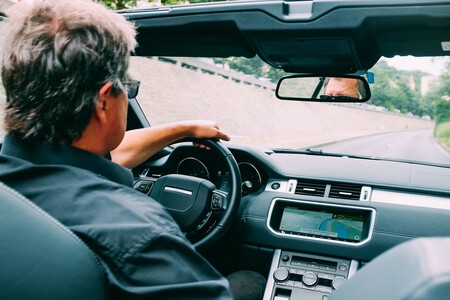The compulsory speed assistant in 2022: how the security system that will come as standard in your car works

The so-called project vision zero, approved by the European institutions, will save 25,000 lives and 140,000 serious injuries by 2040. And, as if these figures were not ambitious enough, it is promised that from 2050 there will be no fatalities on the road. To get it, new security systems will be implemented on a mandatory basis in the next years. Among them, the speed assistant.
From May 2022 all new vehicles that are homologated must have a speed assistant serial. A system that will be part of a set of driving aids, among which is the reversing camera or emergency braking. As of May 2024, all new cars sold will have to have these security systems, whether or not they were approved before May 2022.
Mandatory speed assistant, how it works
The so-called ISA System (for its acronym in English) will be included as standard in all vehicles and looks for alert and put obstacles if the driver wants to break the limits legal speed.
This speed assistant, which it can be disengaged with a button or by fully depressing the accelerator, uses signal recognition or GPS positioning to alert and limits the maximum speed at which you drive on the road. Three levels of affectation are established:
- Informative: the driver receives an audible or haptic warning on the steering wheel that he is exceeding the maximum legal limit.
- warning: the vehicle tries to apply pressure against the foot on the accelerator to warn the driver.
- intervener: the vehicle takes the reins, limiting power through its control unit or requires the driver to fully apply the accelerator to increase speed.
Although distractions, especially the use of mobile phones, are already the main cause of accidents In our country, speeding is still a recurring protagonist in road deaths. According to the European Commission, this mandatory system can reduce accidents by 20% and 30% the number of fatalities.
The best times to use speed assist…and when it’s best to avoid it
As you have read, the speed assistant will be mandatory in all cars that are homologated in just a few months, but it can also be disconnected. Among these attendees we can find the speed limiter and cruise control.
A speed limiter makes it clear in its name what its function is. This can be passive or active. In case it is a passive speed limiter will warn us with an audible alert or haptic that you are exceeding the marked limit. If it is of the active type, the car will not allow us to continue accelerating once the maximum speed is exceeded, unless you step fully on the accelerator. This system is interesting if, for example, when driving on a secondary road. If it’s clear and you want to make sure you don’t exceed the maximum limit, it’s a good time to put it to work. If, despite everything, we need more speed because we want to overtake and reduce risks, we just have to fully press the pedal and unlock the active speed limiter.
Another possibility is that we have cruise control available. This assistant keeps the speed of the car constant permanently, unless we brake or step on the accelerator pedal fully. Even taking your foot off the accelerator, the car will maintain the set speed. In this case, I only recommend using it when the road is flat, has few curves and is very open, and there are few cars. Fuel consumption can skyrocket if the car tries to maintain a constant speed and the hill is very steep. The other possibility is that we have heavy traffic ahead of us. In this case, cruise control can generate more stress than peace of mind, since every time we approach a car we will need to slow down slightly and the car will recover speed when we take our foot off the pedal. If there is a large presence of cars, it is best that the driver takes full control.

The last option is to have a adaptive cruise control. This system uses a signal reader or GPS positioning to always circulate at the maximum speed allowed. What’s more, if it detects that we are approaching a car, it will anticipate braking and keep the safety distance. It will stay like this until we change lanes and proceed to overtake. Without an obstacle ahead, the car will pick up speed again. In this case, the adaptive cruise control is more comfortable in heavy traffic, but the conservatism when it comes to recovering speed can drive some drivers to despair.
Although adaptive cruise control can be very useful on the road, it can also find some pitfalls to be aware of. If your system is based on a signal reader, it is possible that in environments close to a city you will have some problems, since the greater number of them can cause Adapt your speed to an on or adjoining road, instead of the one recommended for the place through which we circulate. This problem is usually solved if the car uses GPS positioning but, in this case, it can be problematic if we find works on the road. Here the signal reader is able to understand the new situation but, if it only uses positioning, it may maintain the previously marked speed, which will be excessive.
In any of the above cases, it is good to remember that speed assistants are just that: assistants. Let’s not completely cede the power of our decisions to the car and let’s keep our attention on the road to drive as safely as possible.
Photo | Oleg the Great Y Adrien Olichon
Reference-www.xataka.com